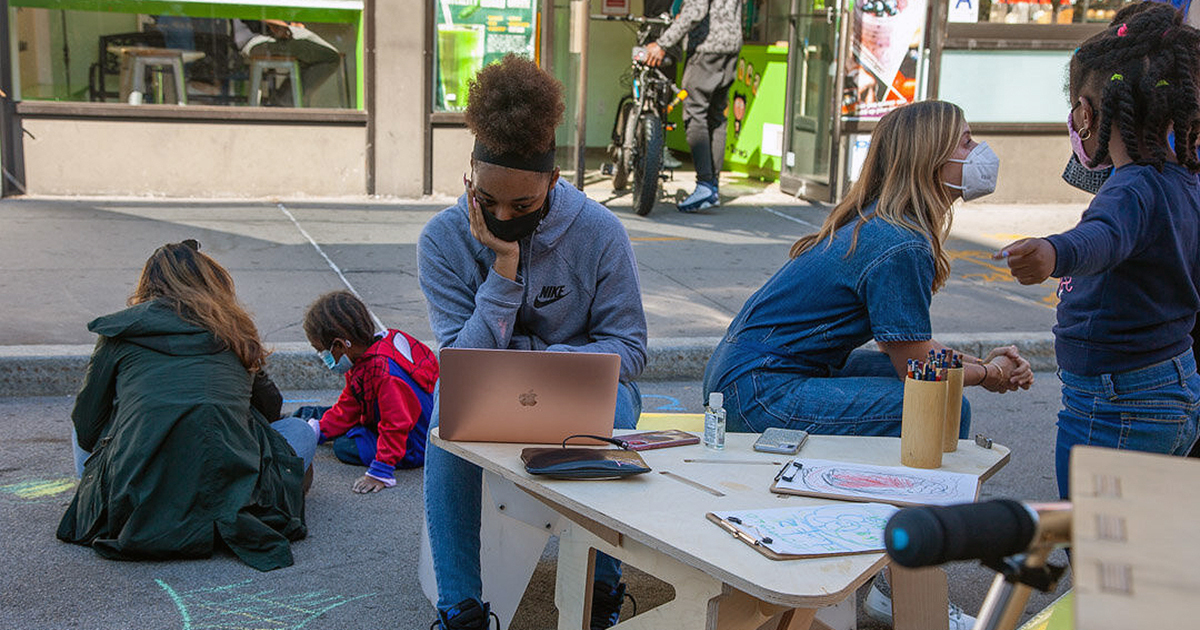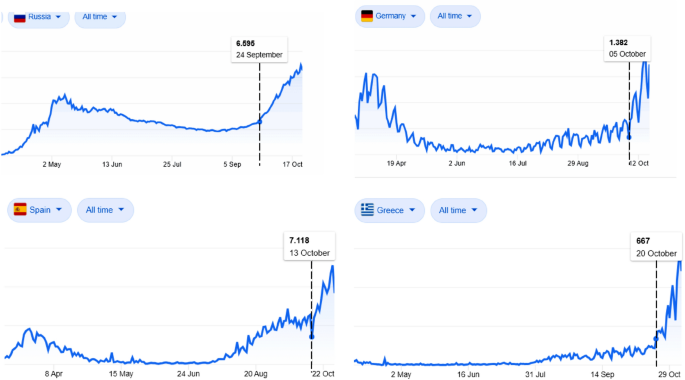Omar Abdillahi Houssein
English 1011
Crowther, Kathryn
03/06/2022
Visual Rhetoric Analysis and Covid-19
News has been primarily dominated by stories about Covid-19 since its outbreak. The new images and stories have the effect of offering people the necessary ingredients that they can use to construct their knowledge and understanding about the coronavirus pandemic. Noting that stories in the news are repeatedly known as accurate info and news images being their graphic proof, the effect they have is considerable. The covid-19 pandemic has mainly been constructed and utilized to assemble intergroup relations and national identities. News about the pandemic has since its outbreak been spread throughout the world in various forms to create awareness, and one of the most effective ways of achieving this is through images. This paper will focus on the rhetorical analysis of images used in communicating the spread of covid-19 in Sweden. The pandemic reporting in Sweden has since been cast as an issue of national stereotyping and nationalism among the Finnish press. From the images, it can be observed that there can be three distinct multimodal rhetoric strategies relating to stereotyping: nationalizing, moralizing, and demonizing. The strategies hypothesize discussions of immoral, dangerous, and arrogant Swedes originating from national stereotypes.
The immense attention that the media has given to the coronavirus pandemic has had the effect of leading to the rise in cases of discrimination and prejudice against various groups of people, for example, the Asian people and Chinese, among other vulnerable minority groups and immigrants. Consequently, this points to the need to adequately study the coronavirus’s effect on intergroup relations. Previous studies relating to nationalism have established that reporting in news shifts in times of crisis whereby the media uses exclusionary and hyperbolic language designed to generate distinct boundaries. Notably, routing reporting is not characterized by detailed national accounts. Journalists instead use language in the third person to detach themselves from the reported events and their audience. It can be observed that the coronavirus pandemic is such that it offers a specific background for the crisis journalism by the media whereby the press constructs national identities. Moralizing is a rhetoric strategy that creates a comprehension of Sweden and Swedes to be indifferent and haughty concerning coronavirus pandemic. As used in this strategy, one of the images in the newspaper includes Anders Tegnell, who serves as the state’s epidemiologist in “Public Health Agency.”
(“Ilta-Sanomat News Paper 2.5.2020”) (“Ilta-Sanomat News Paper 2.5.2020”)
1(a) 1(b)
The figure above (1a) represents one of the news stories connected to the coronavirus pandemic and Anders Tegnell in Sweden. The story is about the rapid increase in coronavirus pandemic infections, the related deaths in the country, and the criticism of the liberal policies on Covid-19 that Tegnell sanctioned. The image has the caption of “Ebola taught a hard lesson,” which plays the role of delivering an ominous message. Notably, logos as a way of actualizing rhetoric appeals has been realized by using red color in the word “Ebola,” which connotes danger and threat; this denotes the cause and effect. Therefore, the verbal element has the effect of communicating through visual and linguistic features; while “Ebola” conveys the primary meaning (disease, virus), the perspective text in image 1(b) has been emphasized through the use of large and bold font communicates the connotative meaning; danger and threat. In the image, the text that refers to Ebola re-counts to the image on the left-hand side shows an individual who died of the Ebola virus in Fig 1(b). Even though there is no express relationship or connection between coronavirus and Ebola, the context in which the newscast story and the incorporation of the items that refer to the two diseases essentially imply a reference. In the spread mentioned above, the image of Tegnell is the most prominent visual element, which is an indication of the importance of communication compared to the other pictures. He avoids facing the spectator, directly demonstrating an aspect of avoidance and arrogance, which echoes the conception that the Swedes are arrogant. Thus, with regards to metafunction, it can be observed that there is no express communication between the audience and Tegnell. In addition, the low viewing angle between the audience (inferior) and Tegnell (superior) points at ethos as a way of rhetoric appeal due to the rise at which he views his audience. It shows that he has a character of looking down at his subordinates. In addition to the statement that implies that Tegnell supports the decisions made by his country, it shows that he does not take advice or criticism.
On the other hand, demonizing has been expressed through verbal elements and images that send the message of danger and threat due to high infection rates and deaths. This has been actualized by verbally and visually accentuating that the Swedes can blow out the virus to the Finns. The image below depicts tens of Swedes who gather outside and have not worn face masks and do not maintain physical social distance.
(“Iilta-Sanomat News Paper 26.6.2020”)
The diverse positions, free composition, and close distance between them show that the people are careless regarding the coronavirus pandemic. At the same time, the images show the stereotype about the Swedes of being outgoing and that they are more likely to express how they feel than the Finns. The news was accompanied by headlines that declared, “Red Exception” and “Sweden Glows Red in the Corona Map.” Besides the linguistic properties of the titles, the color light of the titles is such that they were written in bold and large font and red color, notably the ‘red exception,’ which communicated threat and danger hence stigmatizing Sweden as a coronavirus hotspot.
The third strategy is nationalizing, whereby Sweden insists on the national dimension on the choices made concerning the coronavirus pandemic. The plan acts as a way of ending up with the relationship between Sweden and Finland regarding which country is superior to the other in dealing with the pandemic. This is done by identifying the weaknesses and failures of Sweden’s coronavirus policies. Notably, the competitive setting has set the stage for constructing Sweden and Finland as rivals. Therefore, it can be observed that discursive means can construct national groups and people’s identities. Key among the clearest constituents of this strategy is created through photos and news stories relating to the royal family in Sweden. For instance, a news story was published by Ilta-Sanomat under the title, “National Day in the Shadow of the Pandemic,” and it featured the majestic family’s images, as shown below.
(“Iilta-Sanomat News Paper 26.6.2020”)
The crown princess, alongside her children, has worn national costumes, emphasizing the Swedishness dimension. Although the headlines have been designed to refer to covid-19’s shadow on the country’s national celebrations, the images have visual expression such as luminous colors do not seem to depict a dark mood. Even though these images do not have the effect of constituting the relationship existing between Sweden and Finland which is standard or typical to the nationalizing strategy, it is worth noting that they establish an immense national connection between covid-19 and the royal family as the Swedish symbol.
The visual rhetoric analysis had played a significant role in comparing the success of Finland in the fight on Covid-19 while criticizing Sweden, particularly with regards to its policies. On the other hand, the stereotypes set Finland apart from Sweden by celebrating Finland’s policy in dealing with the pandemic. Coronavirus pandemic is a contemporary subject with the potential of causing intergroup tensions, both in the present and in the future hence the need to explore the impact news stories and images have on the audience.
Works Cited
“Ilta-Sanomat News Paper 2.5.2020.”. 2020, Accessed 7 Mar 2022.
“Iilta-Sanomat News Paper 26.6.2020.”. 2020, Accessed 7 Mar 2022.
“Ilta-Sanomat News Paper 8.6.2020.”. 2020, Accessed 7 Mar 2022.







